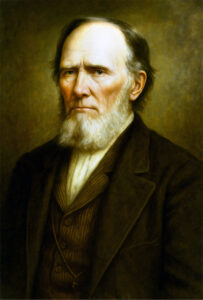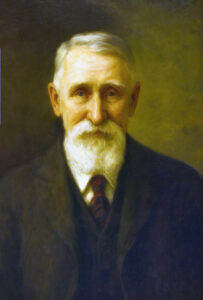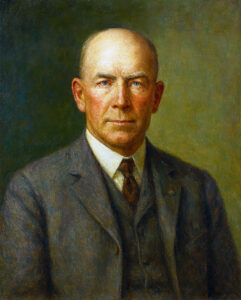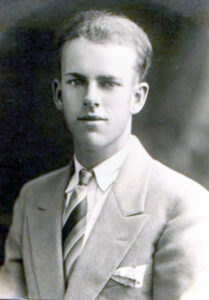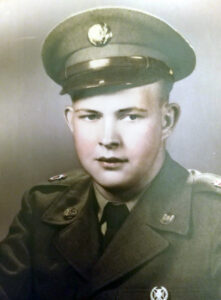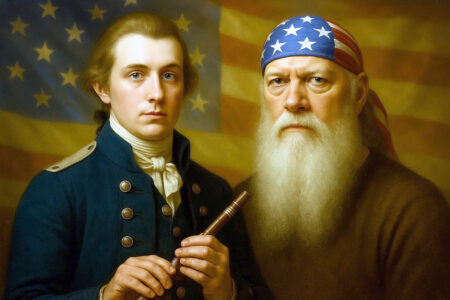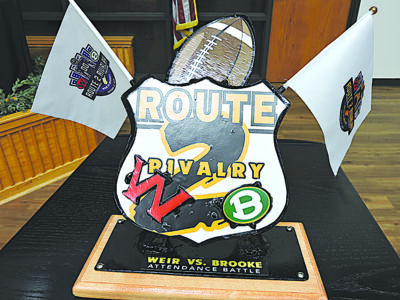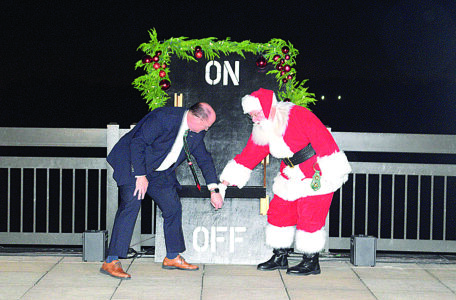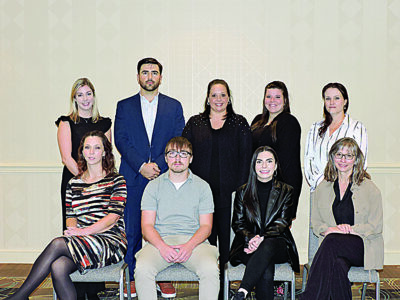The treasure that lies in local cemetery
Working to preserve the American Revolution in Warrenton

ANCESTORS REMEMBERED — Oklahoma historian and genealogist Thomas Ray McElroy enhanced family photos dating back generations to the American Revolution. Many of his family members are buried in the older section of the Warrenton Cemetery in Rayland. In addition to John McElroy, a Bucks County sergeant who lived from 1725-1804, his family included, from top, left, Thomas Hugh McElroy, 1808–83; Thomas Jefferson McElroy, 1847–1934; and Grover Cleveland McElroy, 1887-1919; and bottom, Ray John McElroy, 1906–66; Victor Ray McElroy, 1932-2004; and, created using AI based on historical accounts and period accuracy, Fife Major John McElroy, 1758-1841, with McElroy, 1961-present. McElroy said he created this combined photo to show that although they are seven generations apart, the two 'are bound by their same love of liberty.” -- Contributed
RAYLAND — Nestled in the quiet hills of Jefferson County, just beyond the rumble of a passing freight train, lies a piece of this nation’s soul.
It is not marked by grandeur. It is not guarded by gates.
You will not find a visitor’s center or glossy pamphlets proudly indicating what this site is about.
Beneath a tangled thicket of brush and weeds rest the bones of men who once bore the weight of a revolution.
Ohio’s earliest patriots — those from the Revolutionary War — are buried here, in Warrenton Cemetery.

Their names, for the most part, have been lost to time. Their stories scattered … just like the brittled leaves which blanket their graves every autumn.
Their final resting place? Well, it’s been left to the mercy of nature — and of neglect.
What is now known as the town of Rayland once served as the early settlement of Warrenton — a place first shaped by courage and perseverance.
According to local history and family tradition, these patriots of the revolution, along with their families, crossed the Ohio River as early as 1783, becoming among the first permanent settlers on the western frontier.
The town of Warrenton was officially established in 1801 and surveyed by Enos Kimberly in 1805.
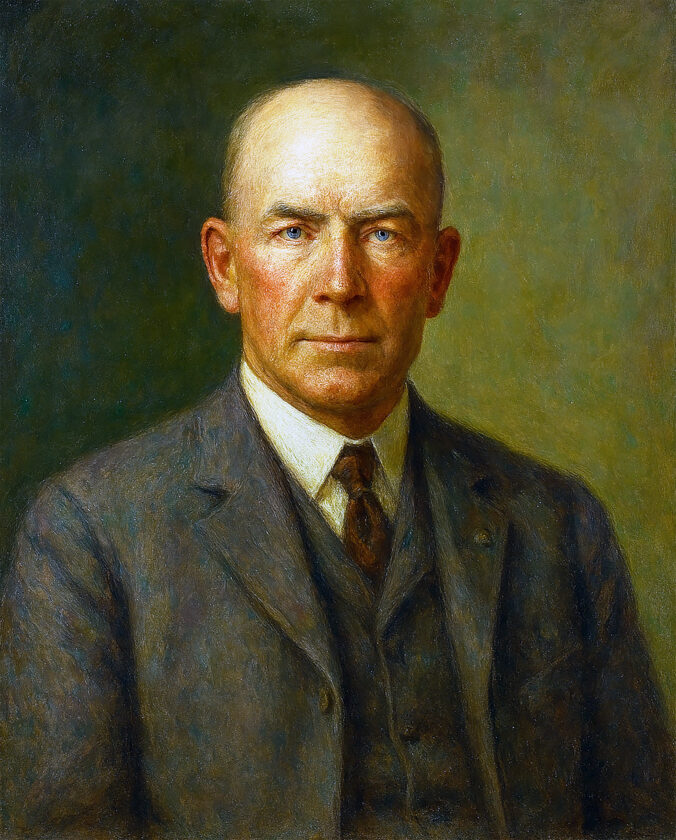
Before 1803, Ohio was not a state, but rather part of the wilderness known as the Ohio Country — a region still healing from the turmoil of the revolution. Yet, even here, far from the eastern battlefields, the spirit of independence endured.
These early settlers — veterans and their families — carried that spirit across the river, carving homes and communities into the hills and valleys that would one day become Jefferson County.
There are no signposts that point the way to where these veterans and their families are buried, and no historical markers to tell passersby this land holds the legacy of liberty.
Instead, a railroad track cuts through the cemetery like a scar, and the rumble of a train is the only sound breaking the silence … serving as a reminder of how progress has once again forgotten its roots.
The weeds are winning, creeping over the toppled headstones found in the cemetery’s older portion.
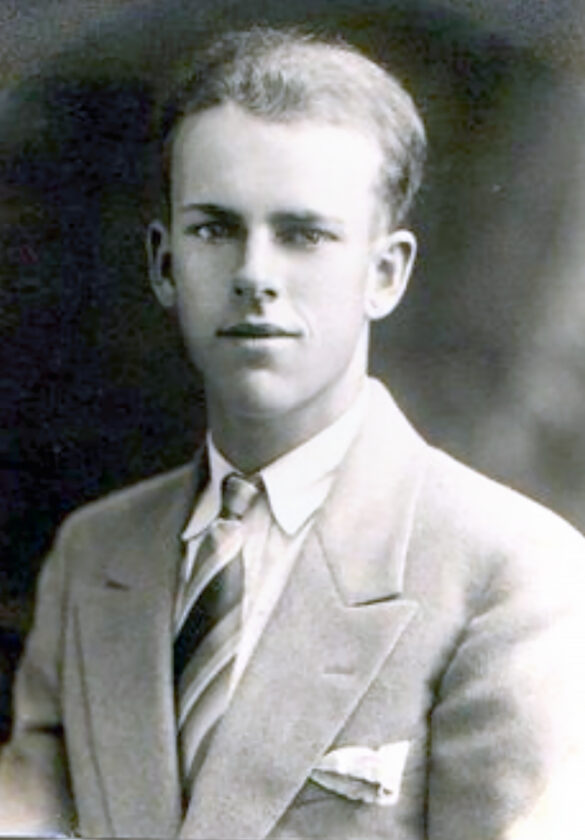
Some markers exist, although worn to the point their inscriptions have faded into the stone.
Others lie broken, half-buried, as if ashamed of the abandonment.
This is not just a cemetery. It is a cautionary tale. It is a place where memories have been allowed to erode for the men who fought for a country which was still only an idea during their time.
These patriots marched through mud and musket fire so Americans could stand here today – free to forget, or free to remember. The choice is ours.
While efforts have been underway throughout Ohio to document Revolutionary War graves, including those by the America 250 Ohio initiative, Warrenton Cemetery remains elusive.
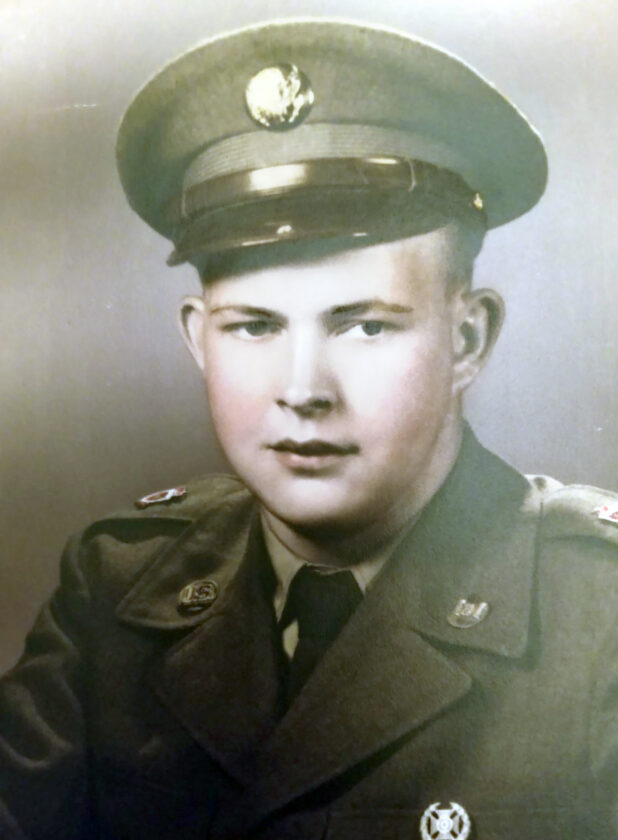
So, what do we do? We can begin by caring. We can begin by asking questions and by showing up with gloves and clippers. And respect. We can begin by demanding our local and state leaders recognize this historic ground.
We can begin by teaching our children that history is not just found in textbooks … that it is buried under weeds and brush and railroad tracks. Waiting to be honored.
Warrenton Cemetery doesn’t need a monument. It simply needs someone to remember. And maybe, just maybe, when the train passes through again, it will not be the only witness to the quiet courage buried beneath its brush.
A Forgotten Patriot on the Hill
Thomas McElroy first heard the silence in 1990.

That is when the genealogist and historian learned about a remote burial ground tucked away in the hills of Ohio. Even then, he understood it wouldn’t be easy to reach the headstones for which he had been named.
Time and topography had conspired to keep that area hidden. This relic of history had slowly been reclaimed by the land.
A decade later, in 2000, McElroy, then a member of the Sons of the American Revolution, Jefferson County Ebenezer Zane Chapter, finally made the journey from his home in Oklahoma to what was once considered Warrenton.
The cemetery was just as elusive as he had imagined.
It’s only access was a rough, narrow lane that wound up the hillside, leading to a place where memory had grown wild.
At the crest of that hill lay the patriot section — the oldest part of the cemetery. This was where the earliest settlers and soldiers had been laid to rest.
But you wouldn’t have known it.
During McElroy’s visit, the area was a thicket of saplings, brambles and brush so dense it seemed it had remained untouched for generations. Still, he pressed on, drawn by something he couldn’t quite name … yet.
Near the edge, just above the railroad wall, a sliver of stone caught his eye, sticking out from the brushwood like a whisper from the past. His destination reached, standing before him, half-swallowed by time, was the name … James Newell.
The name alone stirred something inside him, as McElroy knew the Newells were part of his family’s story. His ancestor, Fife Major John McElroy, had a mother named Nancy Newell.
Although he didn’t yet quite know exactly how James Newell fit into the overall picture, just seeing his gravestone allowed McElroy to feel their connection.
Later research would confirm what his instincts had told him — this was Capt. James Newell of the 1st Battalion, Washington County Militia — a frontier ranger who served during the American Revolution. Most of his battalion’s records had been lost to the Fort Henry and Richmond fires.
McElroy knew that this wasn’t just another name etched into a stone.
This was a man who, along with his company, patrolled the upper Ohio River Valley, watching river crossings, protecting forts and keeping the frontier alive.
This was a man who was the line of defense for families and pioneers, safeguarding settlements along Buffalo Creek and Cross Creek in Pennsylvania, and safeguarding settlements from Wheeling to Short Creek in West Virginia (actually Virginia at the time) and safeguarding settlements across the river into Ohio, the outermost edge of the new nation.
Capt. James Newell was a sentinel on the edge of a fledgling nation. A man who stood watch where the wilderness met the dream of independence. Today, his grave lies quiet, his descendants scattered across Ohio — hidden behind a wall and time.
His story, and the stories of so many patriots like him, continue to echo through the hills of Jefferson County. Waiting for someone to listen.
McElroy explained later research would confirm that James Newell was the brother of Nancy Newell, making him Fife Major John McElroy’s uncle, and McElroy’s great uncle.
That moment fighting through the branches and the briar just to reach that forgotten stone, was a turning point for the Oklahoma resident. It was a reunion in the thicket. A reunion which set him on the path to uncover who he truly was and who they truly were. That is the kind of history buried within this small, local cemetery.
It isn’t just a family’s story, although for McElroy, it is personal. This cemetery is a piece of America’s story, as well.
“He was my great uncle,” McElroy said of Newell. “But it is his military record and the legacy of the patriots who stood beside him that shows why this place matters.”
“The patriot section of the cemetery deserves to be seen again. It should be cleared with care and respect so the stories buried there can once again be told,” McElroy explained.
“It is important to note that within the last month, a new blacktop road, along with improved crossing leading up to the cemetery, has been added,” he continued, noting he was pleasantly surprised to hear the cemetery “is now safely accessible for the first time in years.”
“It’s encouraging to see progress starting,” he commented.
But the history lying beneath the cemetery’s thicket and brush is still waiting to be unearthed and remembered. These early families and the soldiers who protected them, well, they helped shape three states and the nation itself. While their descendants are scattered throughout the country, that bond still remains — the same blood that once carved a home among these hills and rivers … it still flows today.
“May their courage be remembered, and their legacy never fade,” McElroy stated, noting he hopes “someone will step in to properly honor those who rest there.”
Deserving of remembrance
For more than 35 years, McElroy has traced the records of revolutionary patriots and their families.
Through Bibles, in courthouses, in forgotten histories, he has preserved each and every name possible so future generations may remember from where it was they truly began.
“The first step must be careful clearing of the brush, done in a way that protects the markers, while opening the space for long-term maintenance,” McElroy explained. “Designating and restoring this section as a historic cemetery will make preservation easier, ensure proper care for generations to come and allow the public to once again see and appreciate the final resting place of our earliest patriots and pioneers.”
“The Warrenton Cemetery is one of the most historic places in Ohio’s early frontier history,” he continued. “In its front section rest multiple Revolutionary War patriots and the pioneer families who first settled near old Fort Carpenter. Among them are my fourth great-grandfather, Fife Major John McElroy; his aunt, Sara; my uncles; and other men and women who represent the very roots of Warrenton revolutionary heritage.”
In 1880, Joseph Beatty Doyle published a work in which he wrote, “Among the earliest settlers were the families of Tilton, Humphrey, McElroy, Carpenter, Doyle, Stringer, Wells, Scamahorn, Newell and McKee.”
In 1781, Carpenter’s Fort was built near the mouth of Short Creek, serving as a refuge for Warrenton’s first settlers. Families had gathered there for protection. However, when death did arrive, the settlers turned to the hill above, a place chosen because of its safety and permanence.
That hill would become the burial ground of the settlement, the original Warrenton Cemetery.
The earliest graves were placed in 1783 and continued to be the location for burial until 1845. The ground served as the resting place for Warrenton’s first families. This hallowed ground was designated the patriot-pioneer section.
Those who are interred in this section of the cemetery include the patriots who fought for independence, patriots’ mothers who stood beside them in sacrifice and in faith, pioneers who carried their hopes and families into the wilderness and generations who gave Warrenton its beginning.
McElroy said he has attempted to compile a list of as many early deaths as possible who are buried at the Warrenton Cemetery, although he did not include the names of any children. There were many children, he said.
While there are additional names who might be forever lost to time, some names have been identified through sources including the Jefferson County Chapter of the Ohio Genealogical Society; the Warrenton Cemetery book’s patriot section; through McElroy as a member of the Ebenezer Zane Chapter; and the 2003 SAR Ohio Marker Dedication Program.
McElroy mentioned how he worked with Jefferson County officials to have the first Revolutionary War memorial markers placed. He announced he will continue his work for as long as time allows, as he is now a member of the Sons of the American Revolution Norman, Okla., Chapter.
“Even today, the Newell name endures across this landscape — in roads, townships and river towns that still carry their mark,” McElroy concluded. “The family’s story runs deep in the soil of both sides of the Ohio River, a quiet but lasting tribute to those who helped shape this frontier long before it was called Ohio or West Virginia. Their names remain not only on maps, but in the spirit of the land they settled, defended and called home.”
Newell in West Virginia’s Northern Panhandle was named after him. Within the town, Newell Road.
Situated in Newell are attractions such as Homer Laughlin China Co., Laurel Hollow Park, Clarke Athletic Field and Park, the Kennedy Park and Marina, Shadow Lawn Memory Gardens Cemetery, the building that once housed the Newell United Methodist Church, the Newell Cemetery and Northern Cemetery.
McElroy possesses images of his family members with the exception of Fife Major John McElroy. He said he was able to generate an image of himself alongside his great, great, great, great-grandfather using AI. Why?
“This portrait brings together my fourth great-grandfather and me, seven generations apart, yet bound by the same love of liberty.”
“I stand beside him here as his descendant. A proud member of the Sons of the American Revolution. Honoring the bloodline and spirit that still runs strong. His fife, my flag. Our shared freedom. Us.”
A partial list of those buried at the Warrenton Cemetery
According to the Sons of the American Revolution Ohio Marker Dedication Program, the list of those buried at the Warrenton Cemetery includes:
- ANCESTORS REMEMBERED — Oklahoma historian and genealogist Thomas Ray McElroy enhanced family photos dating back generations to the American Revolution. Many of his family members are buried in the older section of the Warrenton Cemetery in Rayland. In addition to John McElroy, a Bucks County sergeant who lived from 1725-1804, his family included, from top, left, Thomas Hugh McElroy, 1808–83; Thomas Jefferson McElroy, 1847–1934; and Grover Cleveland McElroy, 1887-1919; and bottom, Ray John McElroy, 1906–66; Victor Ray McElroy, 1932-2004; and, created using AI based on historical accounts and period accuracy, Fife Major John McElroy, 1758-1841, with McElroy, 1961-present. McElroy said he created this combined photo to show that although they are seven generations apart, the two ‘are bound by their same love of liberty.” — Contributed

